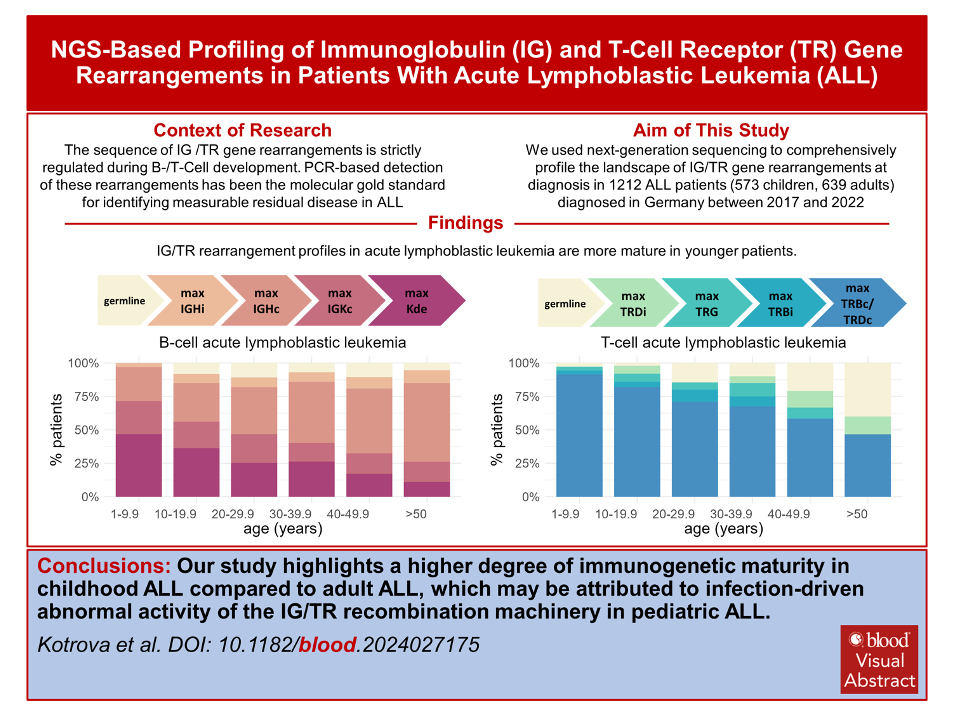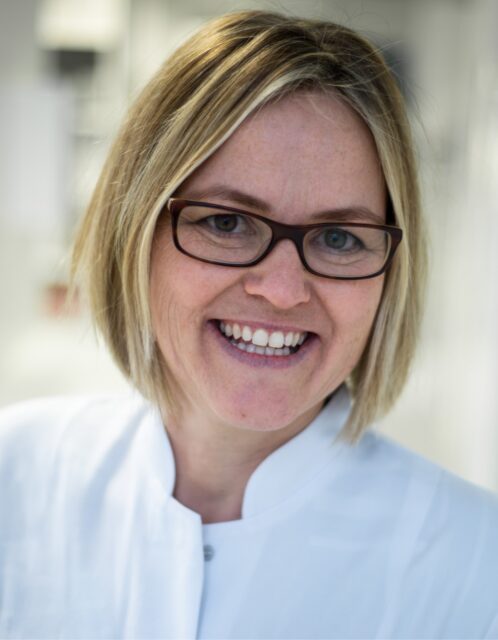New Study Reveals Age-Related Differences in Immunogenetic Maturity in ALL
Acute lymphoblastic leukemia (ALL) is a life-threatening condition of the blood-forming system and is the most common type of cancer in children, but can also affect adults. In ALL, the body produces large numbers of immature, non-functional white blood cells (lymphocytes) that accumulate in the blood and bone marrow, interfering with normal blood cell production and immune function.
While ALL can present across all age groups, it has long been suspected that its biological characteristics differ significantly between children and adults. A recent study from the University Medical Center Schleswig-Holstein (UKSH), Campus Kiel, led by Michaela Kotrova, with Professor Monika Brüggemann, principle investigator at CATCH ALL and corresponding author, together with the University Medical Center Heidelberg, now provides detailed insights into these age-dependent differences. Using next-generation sequencing (NGS), the team examined how the immune system’s genetic rearrangements, that are crucial for lymphocyte development and function, vary in ALL patients of different ages.

The study included 1,212 ALL patients diagnosed in Germany between 2017 and 2022 across all age-groups and offers the most comprehensive NGS-based profiling to date of immunoglobulin (IG) and T-cell receptor (TR) gene rearrangements in ALL. Compared to traditional low-throughput methods, this approach enables also the detection of less abundant clones and a more precise detection of clonal evolution.
A key finding: Children with ALL tend to have a more advanced pattern of these genetic rearrangements than adults. This suggests that their leukemia may originate from immune cells that are more developed. Children also had more of these immune-related markers overall, and very few lacked them entirely, while a larger proportion of adults did, indicating less immunogenetic maturity in the latter. “This work gives us a much more detailed picture of how immune cell development is disrupted in ALL, and how this varies with age,” explains first author Michaela Kotrova.
The study further revealed patterns of clonal evolution (ongoing genetic changes within leukemia cells), especially in a subgroup known as pro-B ALL. Additionally, in adults, non-malignant expanded T-cell clones were frequently observed, although their significance is not yet fully understood.
Corresponding author Monika Brüggemann emphasizes the relevance of these insights: “Understanding the immunogenetic landscape of ALL across age groups helps us tailor diagnostics and improve risk stratification. These differences matter when deciding on the best treatment approach for each patient.”
About CATCH ALL
This study, recently published in the journal Blood, is the latest result of the clinical research group “CATCH ALL – Towards a Cure for Adults and Children with Acute Lymphoblastic Leukemia (ALL)”, which is funded with around five million euros from the German Research Foundation (DFG) since January 2022. By close collaboration between researchers and clinicians, CATCH ALL aims to translate promising therapy approaches into clinical practice to enhance treatment outcomes across all age groups and for all patients.
We congratulate first author Michaela Kotrova and all contributing teams for this achievement.
Original article: Kotrova M, Proske C, Darzentas N, Laqua A, Kehden B, Kässens JC, Bendig S, Kohlscheen S, Szczepanowski M, Wessels W, Antić Ž, Pott C, Ritgen M, van Dongen JJM, Gökbuget N, Chitadze G, Bergmann A, Bastian L, Baldus CD, Cario G, Schrappe M, Schwartz S, Alten J, Koehler R, Brüggemann M. NGS-based IG/TR rearrangement profiling in acute lymphoblastic leukemia: age dependence of immunogenetic maturation. Blood. 2025 Mar 25:blood.2024027175. doi:10.1182/blood.2024027175

